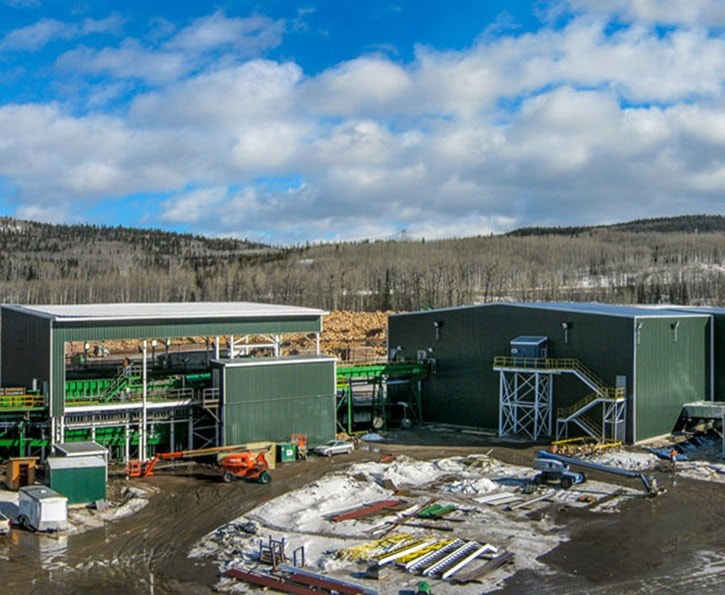Two weeks ago the Houston Forest Products sawmill in Houston shipped its last load of timber and shut down with 271 sawmill workers losing their jobs.
The closure of the sawmill was in part due to a shortage in timber supply that was seeing the mill unable to sustain a capacity to justify keeping the mill open.
How does the low timber supply currently affect the recently reopened Babine Forest Products mill, as well as the second Hampton mill at Decker Lake, and what is the future outlook for the timber supply in the area?
District manager for the Nadina Forest District, Josh Pressey was present at the Village of Burns Lake council meeting last Tuesday to provide an outlook for the future timber supply in the forest district and the numbers are slightly alarming.
The Nadina Forest District is part of the Skeena region and stretches from Endako in the West to the base of Hunger Hill in the East, North to the top Babine Lake and South to the base of Ootsa Lake.
There are two Timber Supply Areas (TSA) within the Nadina Forest District, the Lakes TSA and the Morice TSA, both support the harvesting for the sawmills within the district.
The five sawmills the district supports is the West Fraser Mills Ltd. out of Smithers and Fraser Lake, the Canfor mill out of Houston, the Hampton Affiliates mills at Decker Lake and Burns Lake.
Collectively those five mills require roughly 3.6 million cubic metres of harvested timber to support all the mills to full capacity.
It has also been identified by the district that these mills could sustain themselves and continue operating at 60 per cent capacity, so roughly 2.5 million cubic metres of harvested timber collectively for the five mills.
The Annual Allowable Cuts (AAC) for both the Lakes TSA and Morice TSA total approximately 4.5 million cubic metres of timber available for industry, enough timber to keep the mills running at full capacity.
However, three and seven year projections of the AAC for both the Lakes and Morice TSA aren't promising.
Projections for 2016-2017 see the estimated timber supply fall to 3.2 million cubic metres and the projections see the timber supply drop to an estimated 2.1 million cubic metres by 2021, a number that wouldn't be able to sustain the needed harvest for the mills to operate at 60 per cent capacity.
"There's definitely concern," Pressey said, "That's why you see some of the mills going through what they call 'right sizing' it is something the community needs to be aware of and prepare for it."
In corporate business terms 'right-sizing' is a company restructuring or reorganizing their business through cost-cutting, reduction of work force or reorganizing upper management.
It is typically used instead of down-sizing.
So, what is the outlook for the recently reopened Babine mill?
Fortunately for Babine, the mill that was built is the newest and most efficient mill in the area.
When it was built it was set up to handle a smaller timber supply if need be, which certainly leaves it at an advantage compared to other mills in the area.
As well, the Nadina Forest District has strategies in place to combat the projected shrinking timber supply.
These strategies include low volume harvesting, an aggressive silviculture plan that includes increased fertilization, and planting broader species of trees, such as spruce and Douglas fir.
"We're making sure our inventory of the trees that are out there are the most up to date and the best possible, so when we have to make those really difficulty decisions the inventory is there and the inventory is correct," Pressey said.
Nadina is also ensuring that land use planning is done properly with all broad objectives in place, including temporary land use.
" I think we've done that fairly well," Pressey said.
Chief operating executive of Hampton Affiliates, Steve Zika says that timber supply is and will continue to be the biggest risk to the future of the two sawmills in Burns Lake.
"The future of these operations is partly dependent on the community and our First Nations partners helping in securing as much timber supply as practical," Zika said, "We continue to encourage the government to be flexible in looking at mid-term timber supply and to not drop the Lakes TSA annual allowable cut too dramatically in the next few years, especially if there is dead pine left which still has value."
